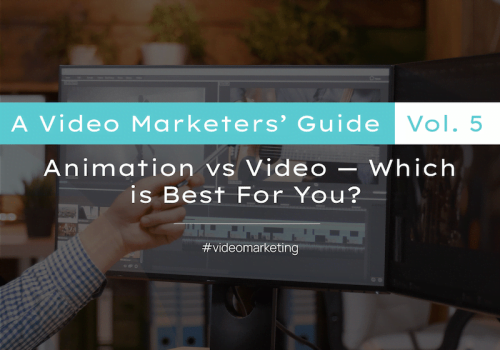Greenscreen filming can be used for an endless variety of videos, from special effects in films to presentations to live streaming. You would be surprised by how many of your favourite movies use a green screen.
What is a Green Screen?
A green screen is essentially a form of special effects. It’s a way of removing the background on a piece of video. This does not mean it can be done if the video has already been recorded, but if you know you’ll need to remove or replace the background in post-production, then filming on a green screen can make this happen. Once you’ve removed the background in post-production, you can replace it with anything you want or keep the transparent background. People tend to use greenscreen to change the location or scenery or, in particular, if they are performing a dangerous stunt in a film, and it’s much safer to make it looks as though it’s happening rather than actually doing it.
Where Can Businesses Use Green Screens?
While this is widely and more commonly used in the film industry, it can also be used incredibly effectively for business and commercial videos in webinars and presentations, for example.
Suppose you’re presenting or narrating over a presentation or webinar. In this case, you can film yourself on a greenscreen and overlay yourself in the corner of the screen, meaning you can easily explain the points you are making by visibly pointing and using hand gestures that better convey emotion and engages the audience.
Here is an example we did for Mental Health at Work:
It’s also widely used to overcome accessibility; for example, if you’re footage has people talking in it but no one visibly speaking, you will have seen this on TV a lot of the time where there is a person in the corner of the screen using sign language.
Why Are Green Screens Green?
There is no particular reason as to why they are green other than the fact that the colour green is distinctly different from any other colour of the actor/subject, i.e. hair, skin tone, accessories, clothes etc. Technically you can use any colour, but a vibrant green is the industry standard.
What Happens If I Need to Film Something Green?
If you tried filming something green on a green screen, as you may already have guessed, this would not work; for example, if your subject was wearing a green shirt and the background gets removed, the shirt would also be removed, meaning your subject would have a floating head. Should this be the case, then the next choice is usually a blue screen. As I mentioned, you can technically use any vibrant colour; except for white, black or any monotone colours, as this would interfere with highlights and shadows.
Dos and Don’ts When Filming With a Green Screen
Light the background separately from the subject
It’s important to light your subject separately from the background to avoid your subject casting shadows over the greenscreen, as this can also create a spill where the background won’t be removed very cleanly.
Keep the camera as still as possible
Keeping the camera still will also improve how clean the background is removed. Moving the camera around too much will create a spill around the subject/actor, where some green areas will be visible as they move.
Light both the subject and background using soft lights
Harsh lighting can also interfere with the background, so try to use diffusers or softboxes where possible to soften the light, which will result in a much cleaner finish.
Scripting
Write your script the way you speak: short, simple sentences with natural pauses to keep the delivery smooth and relaxed. Avoid cramming in too much detail – stick to the key points and let your visuals reinforce the message. Have your speaker(s) rehearse with the script ahead of time so the delivery feels natural and confident.
Look Through the Camera, Not Around It
Viewers quickly notice when your eyes wander, so maintaining steady eye contact is key to building trust. Position the teleprompter directly in line with the camera lens – this way you can follow the script while still appearing to look straight at your audience. It’s a small tweak that makes your delivery feel far more genuine.
Clothing
It goes without saying you shouldn’t wear anything green; otherwise, this will also be removed in post-production. Wearing stripes or busy patterns on the camera should also be avoided as this can create a strobe effect making it disorientating to watch.
Why You Shouldn’t Wear Glasses or Reflective Materials on a Green Screen?
Reflective materials and glasses can also reflect green, meaning they may also be accidentally removed. It’s also worth noting if someone is wearing glasses, you may see the reflection of the room you’re filming in, meaning if you are changing the background to make it look as though the subject is in a different location, the reflection of the room will still be in their glasses, so contact lenses maybe be a better option if possible.
Green screens are a great tool in any video editor’s arsenal. They allow you to film against a backdrop that can be replaced with any number of images or videos, which opens up a world of possibilities for your final product. If you need help filming a green screen video, our team at Capsule is ready and waiting to assist you. Capsule video production services span back over 12 years, and would be more than happy to lend our expertise to your next project. Give us a call today at 01787 267949, and let’s get started!







